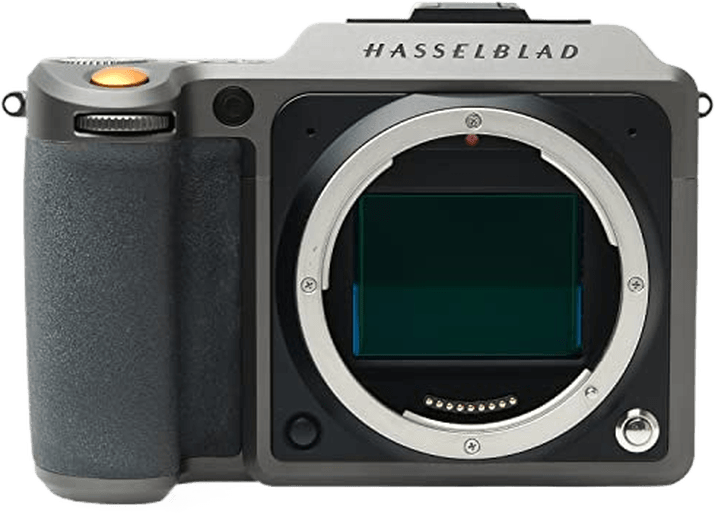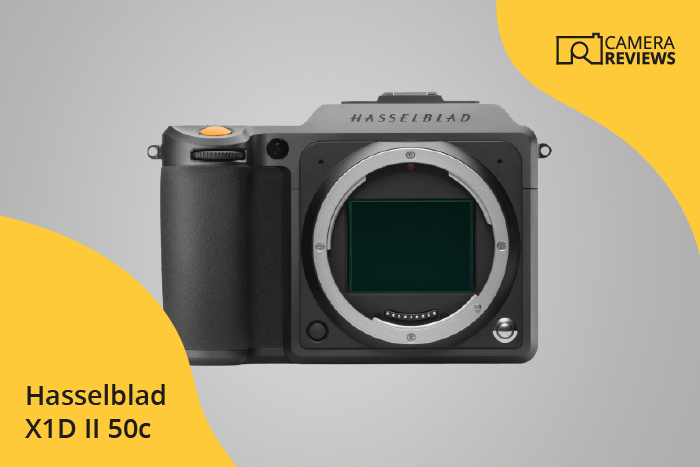Hasselblad X1D II 50c Specs and Scores

Scoring a 72 out of 100, the Hasselblad X1D II 50c is a medium format camera released in 2019. Announced on June 19th, 2019, it launched with a price of $5750. The camera measures 148 x 97 x 70mm and weighs 766g, or 1.69lbs. As a medium format camera, the X1D II 50c’s specifications are competitive in today’s market, offering photographers a high-quality option for their needs. With these specifications, the Hasselblad X1D II 50c proves to be a strong contender among other cameras in its category.
Hasselblad X1D II 50c Overview and Optics
The Hasselblad X1D II 50c receives an optics score of 68 out of 100. This camera boasts a 50-megapixel CMOS sensor with a medium format size, contributing to its high image quality. The sensor has a DXOMARK score of 72, which is competitive in today’s market. However, the camera’s shooting speed is only 2.7, which may not be suitable for fast-paced action photography.
The camera features a Hasselblad X lens mount, providing compatibility with a variety of high-quality lenses. Unfortunately, it does not offer image stabilization, which could impact image sharpness in certain shooting situations. The X1D II 50c has a 4:3 aspect ratio, which is a standard format for most photography types.
Taking all factors into consideration, the Hasselblad X1D II 50c is a strong contender in the medium format camera market, with its high-resolution sensor and versatile lens mount. However, the lack of image stabilization and slower shooting speed may limit its appeal for certain types of photography.
Hasselblad X1D II 50c Video Performance
The Hasselblad X1D II 50c receives a video score of 50/100. Its video capabilities include a maximum resolution of 2.7K (2720 x 1530) and a top frame rate of 30fps. However, it lacks built-in time-lapse functionality.
In today’s market, the X1D II 50c’s video specifications fall short compared to other cameras offering 4K resolution and higher frame rates. The absence of time-lapse functionality further limits its appeal to videographers.
Despite its shortcomings in video capabilities, the Hasselblad X1D II 50c remains an impressive camera for still photography. Potential buyers should consider their primary needs when evaluating this camera and weigh its video limitations against its strong performance in other areas.
Hasselblad X1D II 50c Features and Benefits
The Hasselblad X1D II 50c receives a feature score of 87/100, showcasing its strong performance in terms of specifications. With a 3.6-inch screen size and a resolution of 2,360,000 dots, the camera provides users with a clear view of their captured images. The touchscreen capability enhances user experience, making it easier to navigate through the device.
Despite its strengths, the X1D II 50c does not offer a flip screen, which might be a drawback for some photographers in need of versatile shooting angles. However, it compensates with useful features such as GPS, WIFI, and Bluetooth connectivity, allowing for seamless integration with other devices and applications.
Taking into account the specifications and the current market trends, the Hasselblad X1D II 50c stands as a strong contender for photographers seeking high-quality and feature-rich cameras. Its advanced capabilities make it a desirable choice for both professionals and enthusiasts alike.
Hasselblad X1D II 50c Storage and Battery
The storage and battery section of the Hasselblad X1D II 50c receives a score of 49/100. This camera has two memory card slots, compatible with SD, SDHC, and SDXC cards, providing ample storage options for photographers. However, the battery life falls short, offering only 300 shots per charge with its 3400 mAh li-ion battery. Additionally, the absence of USB charging limits the convenience of recharging the battery.
Considering the storage and battery capabilities, the Hasselblad X1D II 50c has room for improvement to meet the demands of today’s market. With its current specifications, users may find themselves limited by battery life and charging options.
Hasselblad X1D II 50c Alternatives
Do you want to know how the Hasselblad X1D II 50c compares to its competitors? Have a look at the most popular comparisons for this camera below:
- Fujifilm GFX 50S II vs Hasselblad X1D II 50c
- Hasselblad X1D II 50c vs Sony a7R IV
- Canon EOS R7 vs Hasselblad X1D II 50c
- Fujifilm GFX100S vs Hasselblad X1D II 50c
- Hasselblad X1D II 50c vs Nikon D850
- Hasselblad X1D II 50c vs Sony a1
Hasselblad X1D II 50c FAQ
Does the Hasselblad X1D II 50c Have Built-in Image Stabilization?
The Hasselblad X1D II 50c does not have built-in image stabilization. Users may need to rely on tripods or stabilized lenses for steadier shots.
Does the Hasselblad X1D II 50c Support 4K Video Recording?
The Hasselblad X1D II 50c does not support 4K video recording. Its maximum video resolution is 2.7K (2720 x 1530) at 30fps.
What Size Sensor Does The Hasselblad X1D II 50c Have?
The Hasselblad X1D II 50c features a medium format sensor, offering exceptional image quality and detail compared to smaller sensor sizes.
Does the Hasselblad X1D II 50c Have a Dual Memory Card Slot?
Yes, the Hasselblad X1D II 50c has a dual memory card slot, allowing users to store and manage their photos and videos more efficiently.
Does the Hasselblad X1D II 50c Have a Touch Screen?
Yes, the Hasselblad X1D II 50c has a touch screen, making it easy to navigate menus, review images, and adjust settings.
Does the Hasselblad X1D II 50c Have Wi-Fi and Bluetooth?
Yes, the Hasselblad X1D II 50c has both Wi-Fi and Bluetooth capabilities, allowing for seamless connectivity and remote control options.
Does the Hasselblad X1D II 50c Have GPS?
Yes, the Hasselblad X1D II 50c has built-in GPS, making it convenient for geotagging and tracking the location of your photos.
Is the Hasselblad X1D II 50c Weather Sealed?
Yes, the Hasselblad X1D II 50c is weather-sealed, providing protection against dust, moisture, and other challenging environmental conditions.
Does the Hasselblad X1D II 50c Have a Built-in Flash?
No, the Hasselblad X1D II 50c does not have a built-in flash. Users will need to use external flash units for additional lighting when needed.

